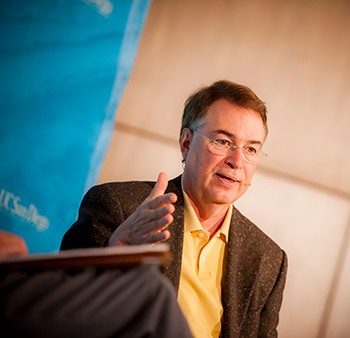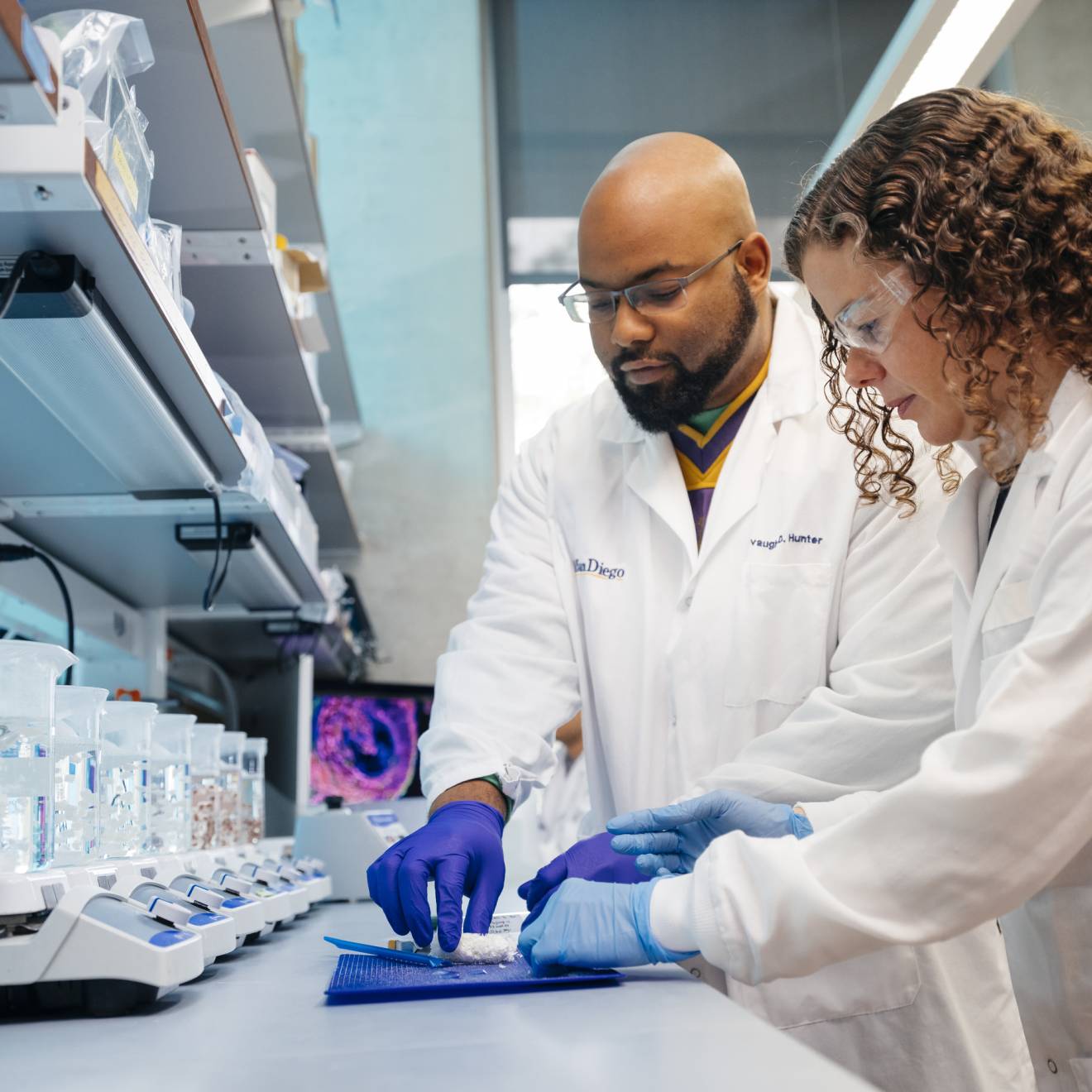Doug Ramsey, UC San Diego

Larry Smarr, a physicist whose work at the University of Illinois at Urbana-Champaign on calculating black hole collisions led him to champion a federal commitment to dramatically enhance U.S. computing power — which in turn led to the development of NCSA Mosaic, the precursor to Web browsers — was named today as the first 2014 recipient of the Golden Goose Award, which goes to three or four winners annually.
The Golden Goose Award honors researchers whose federally funded research may not have seemed to have significant practical applications at the time it was conducted but has resulted in major economic or other benefits to society.
The announcement was made in Chicago by Rep. Randy Hultgren (R-IL) during a symposium on the Golden Goose Award led by Rep. Jim Cooper (D-TN) and Rep. Hultgren at the annual meeting of the American Association for the Advancement of Science (AAAS).
Smarr is a professor of computer science and engineering at the University of California, San Diego, and director of the California Institute for Telecommunications and Information Technology (Calit2), a partnership of UC San Diego and UC Irvine.
At Illinois in the 1980s, Smarr was conducting gravitational physics research focused on computing the dynamics of black holes in space. The work, supported by the National Science Foundation (NSF), required enormous computing power, which at the time was not readily available to academic researchers in the United States, although supercomputers were already being used in European research labs. Realizing that the U.S. had fallen behind and that he and fellow researchers needed far greater computational power, Smarr led the first proposal to NSF arguing for the creation of a national supercomputing center housed in an academic setting. This set off a revolution in computational science in academia and industry that continues today.
Upon winning a peer-reviewed national competition underwritten by NSF, Smarr was named director of the National Center for Supercomputing Applications (NCSA), located at the University of Illinois at Urbana-Champaign. At NCSA he created a software development group to support the application needs of researchers. Two members of that NCSA team, Marc Andreessen and Eric Bina, created Mosaic, the world's first widely-used graphical Web browser. The principal Web browsers of the past two decades, such as Netscape, Internet Explorer and Firefox, are descendants of Mosaic, and today virtually every consumer computing device that accesses information, from smartphones to televisions, from tablets to automobiles, contains a graphical Web browser.
Representative Jim Cooper (D-TN) first proposed the Golden Goose Award when the late Sen. William Proxmire (D-WI) was issuing the Golden Fleece Award to target wasteful federal spending and often targeted peer-reviewed science because it sounded odd. Rep. Cooper believed such an award was needed to counter the false impression that odd-sounding research was not useful.
In 2012, a coalition of business, university, and scientific organizations listed below created the Golden Goose Award. Like the bipartisan group of Members of Congress who support the Golden Goose Award, the founding organizations believe that federally funded basic scientific research is the cornerstone of American innovation and essential to our economic growth, health, global competitiveness, and national security. Award recipients are selected by a panel of respected scientists and university research leaders.
"The Golden Goose Award celebrates unexpected discoveries, and there's no better example than the World Wide Web," Rep. Cooper said. "The Web is one of humankind's greatest accomplishments and is transforming our planet. Without the unanticipated consequences from Dr. Smarr's research, we'd be trapped in an informational black hole. His success reminds us that we never know where science might lead."
"Dr. Smarr's work is a perfect example of why Congress must remain committed to basic scientific research," Rep. Hultgren said. "It has been a focus of mine on the Science Committee to showcase these kinds of stories, and as the co-founder of the House Science and National Labs Caucus, it was an honor to announce this award for the work Dr. Smarr did in my home state. The idea for Illinois' National Center for Supercomputing Applications was inspired by Dr. Smarr's important questions about black holes, but has demonstrated its usefulness in tackling many other scientific puzzles. As scientists continue gaining a better understanding of the universe, the technology, and tools they use to get there are having broad and longstanding impacts throughout our society. Science that is 'strange' to Congress can lead to the next scientific breakthrough, and these scientific inquiries are vital for America to maintain its place as an innovative and exceptional nation."
Smarr will receive his award at the third annual Golden Goose Awards ceremony in Washington, D.C., on Sept. 18, along with the other awardees to be announced later this year. Founding organizations of the Golden Goose Award, led by the Association of American Universities, include AAAS, the Association of Public and Land-grant Universities, Breakthrough Institute, Progressive Policy Institute, Richard Lounsbery Foundation, the Science Coalition, Task Force on American Innovation and United for Medical Research.

